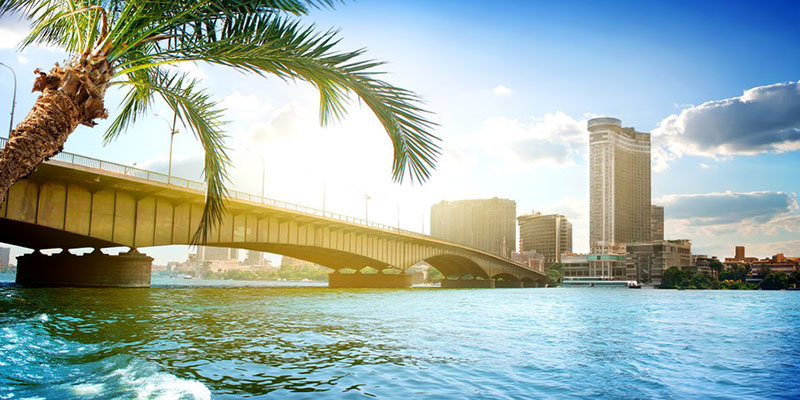With concerns over the Nile’s continuing ability to supply drinking water, Egypt is investing in desalination projects.
Attention is shifting to desalination in Africa as droughts worsen and better technologies become available
Across the continent of Africa, water demand is going up due to growing populations and climate change-associated drought. As a result, desalination is getting more attention from investors and decision-makers. Many now believe it’s poised to solve many of the continent’s water problems.
According to an article in African Business, the long-term outlook for desalination as a cost-effective strategy for Africa’s water security has improved in recent years as renewable energy has become more efficient. New desalination pumps, membranes, and energy-recovery technology have dropped power requirements to a quarter of what they were in the 1980s.
Some projects already are successfully harnessing some combination of wind and solar to power desalination plants. While powering reverse osmosis (RO) desalination with alternative energy sources is not yet widespread, advances in renewable energy storage are now inspiring more governments to investigate renewable-powered desalination. Ways to manage short- and long-term solar energy variability include lithium ion batteries and molten salt storage at thermal solar plants.
Technology for converting brine and other desalination wastes into valuable resources — including hydrochloric acid — is also reducing the cost of RO desalination.
Projects in Africa
Almost half of global desalination projects are happening in the Middle East and North Africa, with the market expected to climb to approximately $4.3 billion by 2022.
In Morocco, a $301 million wind-powered seawater desalination plant is being built to supply water for domestic use and irrigation of 15,000 hectares of agricultural land. Local growers are helping to finance the project.
Egypt is building cities outside of the Nile Valley and initiating a solar desalination build-out to quadruple its capacity. Cairo hopes to expand the nation’s agricultural sector and break free of dependence on the Nile. An overarching concern is the possibility that the river will become an unreliable source of water in the future due to the Grand Ethiopian Renaissance Dam.
Ayman Soliman, CEO of the Sovereign Fund of Egypt, explained the country’s outlook for desalination investment:
This is a very forward-looking strategy, and it’s an attractive asset class for us to invest in long-term. The market is wide open for developers since we know there is a growing sustained demand for desal capacities that are being built. Africa is super hungry for renewables and desal […].
In projects across the continent:
- In eastern Africa, solar-powered desalination systems are rolling out to provide 1 million L/d of drinking water to 23 Kenyan hospitals, and the systems have some presence in Tanzania, Somalia, and Madagascar.
- On the small island of Mayotte, off Madagascar, three NIROBOX™ SWRO systems with a total capacity of 3,000 m3/d are supplying drinking water for residents.
- In Abidjan, Ivory Coast’s largest city, Fluence has begun constructing a water treatment plant to improve the population’s water supply. The project will treat 150,000 m³/d of water from the Aghien lagoon, producing drinking water for 1.5 million people in Abidjan.
- South Africa has lagged on renewable energy, due in part to dependency on coal, but some expect desalination adoption to accelerate within the next two decades.
Fluence has now completed three NIROBOX™ desalination projects in Egypt, with its work on the desalination plant for the city of New Mansoura halfway complete in the fourth quarter of 2021. NIROBOX™ is a line of modular reverse osmosis units for seawater and brackish water desalination, as well as purification of fresh water.
NIROBOX™ has features that make it highly adaptable for islands and other remote environments. Because the plants are packaged in standard shipping containers, delivery and installation are simplified. They’re energy-efficient and specialized coating makes the units resistant to salt air.
Africa’s Water Demand Set to Grow
A global population of 9.7 billion is projected for 2050, with two thirds of the growth in Africa. With the added stress on water supplies from climate change, desalination will be needed. Fluence is active in Africa, with major projects in Egypt and the Ivory Coast, and can provide BOO and BOOT structured financing to make infrastructure happen even where investment capital is unavailable. Contact Fluence — our experts are ready to discuss your vision of water security and growth through desalination.

